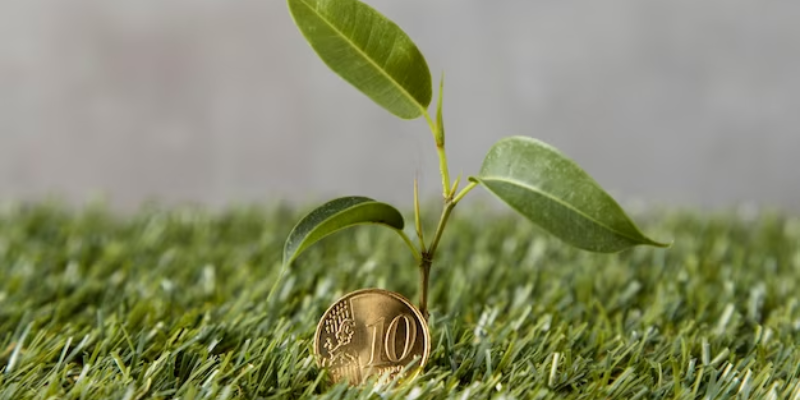Green Bonds: A Brief Guide to Read Before Investing
As the world works to fight climate change and other environmental issues, green bonds have become a popular way for people to invest their money while supporting a good cause. These bonds allow investors to earn a return while funding projects that help the environment.
Green bonds are similar to regular bonds because they pay a fixed return, but the key difference is how the money is used. The funds go specifically toward projects like renewable energy, energy-efficient technology, clean public transportation, better waste management, conserving natural resources, and building eco-friendly structures that meet high standards.
Governments, businesses, and international organizations issue green bonds to support these kinds of projects. For investors, it's a simple way to help the planet while still meeting their financial goals.
The concept is straightforward: green bonds work just like regular bonds, where investors lend money in exchange for interest payments. The big difference is how the funds are used. Instead of general spending, the money raised through green bonds goes to environmentally friendly projects.
However, let's just continue reading to know more about the uses and types of using green bonds.

Significant Types of Green Bonds
There are different types of green bonds, each designed to fund environmental projects while offering unique features based on who issues them, how the funds are used, and what protections are in place for investors if the issuer can't repay the debt. Here's a breakdown of the most common types:
1. "Use of Proceeds" Bonds
These bonds are used to fund specific green projects, but if the issuer goes bankrupt, investors can claim the issuer's other assets. They carry the same credit rating as the issuer's regular bonds, making them a relatively secure choice.
2. "Use of Proceeds" Revenue Bonds or Asset-Backed Securities
These bonds are also used for green projects, but the repayment comes from specific revenue sources, like taxes or service fees collected by the issuer. Governments and local municipalities often issue this type of bond.
3. Project Bonds
These bonds are tied to a single green project. If the project fails, investors can only claim assets related to that specific project. This makes them more focused but potentially riskier.
4. Securitization Bonds
These bonds bundle multiple green projects into one package. Investors are backed by the combined assets of all the projects in the portfolio, which can spread out the risk.
5. Covered Bonds
These bonds finance a group of green projects called a "covered pool." Investors can claim both the issuer's assets and the pool of green projects if the issuer defaults, giving them extra protection.
6. Green Loans
These are loans used to fund green initiatives. They can be secured, meaning backed by specific collateral, or unsecured, where lenders rely on the borrower's general assets for repayment.
Each type of green bond has its structure and level of risk, so it's important for investors to choose the one that fits their financial goals and risk tolerance while supporting the environment.
What is the Right Way to Purchase Green Bonds?
Green bonds are a great way to invest in sustainability while earning a return, but knowing the right steps can help you make smarter decisions. Here's how you can approach purchasing green bonds effectively:
1. Understand What Green Bonds Are
Before purchasing, make sure you understand what green bonds are and how they work. These bonds are specifically designed to fund environmental projects, so when you invest in them, your money is used for things like renewable energy, clean water, or sustainable transportation.
2. Do Your Research
Not all green bonds are created equal. Some are certified by organizations like the Climate Bonds Initiative to ensure they meet specific environmental standards, while others might not have the same level of transparency. Look into the issuer's reputation and the projects your money will fund. Ask questions like:
What kind of projects will this bond support?
Are these projects certified or aligned with recognized green standards?
Does the issuer have a good track record of delivering on their promises?
3. Check the Bond's Rating and Risk
Like traditional bonds, green bonds come with risks. Check the bond's credit rating to assess the likelihood of getting your money back. Bonds issued by governments or large, stable corporations tend to be less risky, but they may also offer lower returns.
4. Work with a Broker or Investment Platform
Most green bonds are bought through brokers or investment platforms. You can ask your broker to help you find green bonds that align with your values and financial goals. Some platforms also offer funds that bundle multiple green bonds for diversification.

5. Decide Between Individual Bonds and Green Bond Funds
If you want to invest in a specific project, buying individual green bonds might be the way to go. However, if you'd prefer to spread your investment across multiple projects, consider green bond funds or exchange-traded funds (ETFs). These offer diversification and reduce the risk tied to any single project or issuer.
6. Understand the Returns
While green bonds aim to deliver environmental benefits, they should also provide reasonable financial returns. Make sure the interest rates and repayment terms align with your financial goals.
7. Keep an Eye on Sustainability Claims
Unfortunately, not all bonds labeled "green" are as eco-friendly as they claim. This practice, called "greenwashing," can mislead investors. Look for third-party certifications or disclosures that clearly outline the bond's environmental impact.
Invest to See a Green World
These bonds offer a unique opportunity to support projects that tackle climate change, promote sustainability, and create a better future for the planet, all while helping you achieve your financial goals.
By understanding the different types of green bonds, doing your research, and choosing the right investment strategy, you can confidently get profit out of this growing market. Whether you're funding renewable energy, clean transportation, or conservation projects, your investment contributes to positive change.
As green bonds continue to gain attention, they represent more than just an investment; they're a commitment to a greener, healthier, and more sustainable world. So, take the time to explore your options and invest in a way that matches your values and aspirations for the future.